Curious Bannerstones Used By Prehistoric Native Americans For Unknown Purpose
Jan Bartek - AncientPages.com - About 8,000 years ago, ancient Americans suddenly started producing unusual objects known today as bannerstones. The purpose of these curious artifacts has eluded scholars who are still in the dark trying to find out why the objects were valuable to Archaic people.
Bannerstones have been unearthed in many places, mainly in the Eastern United States.
These baffling ancient objects made from different stone materials vary in size and shape, and some of them are truly unique.
Image credit National Museum of the American Indian - Compilation by AncientPages.com
When knowledge of bannerstones reached the scientific community, scientists assumed these were some ancient tools. However, the fact many unused bannerstones have been found in graves diminished the strength of this theory.
At the Indian Knoll site in Kentucky, archaeologists discovered many unused bannerstones in graves. Few bannerstones found at this place “show signs of use. They are carved of exotic imported stones with an exceptional artistry that exploits the natural colors, patterns, and striations of the stones to afford maximum visual satisfaction." 1
Could these bannerstones have been burial gifts?
Most bannerstones, not all, have a butterfly shape, and they are characterized by a symmetrically carved hole in the center. These ancient American artifacts often have different designs and colors, suggesting they were of spiritual and ceremonial significance.
The name bannerstone “was coined by early twentieth century scholars who thought they must have been mounted on shafts and used as emblems or ceremonial weapons. But just why they were made only during the so-called Archaic period, which ended around 3,000 years ago, has been debated by archaeologists for more than a hundred years.
Some have taken the position that they were not strictly ceremonial and were used as weights that imparted force and accuracy to spear throwers or atlats.” 2
“Atlats are essentially throwing sticks with a handle on one end and a hook on the other that can hold a spear. By drawing the spear thrower back and then hurling it forward, a hunter can use the atlatl as a lever to launch a spear, sending it farther and with more power than of launched only by hand.” 2 This led scholars to think “the bannerstones were meant to somehow increase the efficiency of such spear throwers.” 2
Thera are also researchers who say the bannerstones’ “craftsmanship and materials suggest that they also served as emblems of prestige and status conferred upon hunters coming of age, and as supernatural talismans for increasing the spear-throwers efficacy. They may also have served as emblems of clans or other social units.” 3
Based on years of studies of bannerstones, researchers discovered bannerstones are highly individualized, meaning these objects must have had a special meaning to the people who fashioned them.
Bannerstone produced around 2,000 B.C. The form of the present example is known as a double-notched butterfly. Credit: Public Domain
“The earliest bannerstones were made by the Shell Mound Archaic people around 6,000 B.C.. By around 3,800 B.C., people in the Savannah River Valley had begun fashion them.” 2
The tradition spread among the prehistoric Native Americans until around 1,500 B.C. bannerstones suddenly vanished from archaeological records.
It is unknown why ancient Americans stopped producing bannerstones. Still, scientists noted, “complex stone pipes appear around this time, and that finely made, drilled stone figures depicting birds may have been mounted on atlatls, perhaps occupying the cultural niche once filled by bannerstones.
The skills and aesthetic appreciation Archaic people once lavished on these unique objects changed focus, and bannerstones tradition vanished.” 2
Updated on November 20, 2023
Written by Jan Bartek - AncientPages.com Staff Writer
Copyright © AncientPages.com All rights reserved. This material may not be published, broadcast, rewritten or redistributed in whole or part without the express written permission of AncientPages.com
Expand for references- Berlo, Janet C. and Ruth B. Phillips - Native North American Art.
- Powell, Eric A. "Set In Stone." Archaeology70, no. 4 (2017): 44-48.
- Hero, Hawk, and Open Hand: American Indian Art of the Ancient Midwest and South
- Cooper, Steven R. "An Unusual Bannerstone Feature." Central States Archaeological Journal55, no. 2 (2008): 71
More From Ancient Pages
-
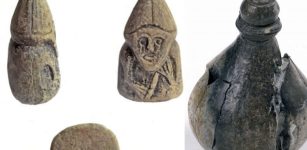 Old Norse Settlers Traded Walrus Ivory With Kyiv – Spectacular Archaeological Finds Reveal
Archaeology | Jun 16, 2022
Old Norse Settlers Traded Walrus Ivory With Kyiv – Spectacular Archaeological Finds Reveal
Archaeology | Jun 16, 2022 -
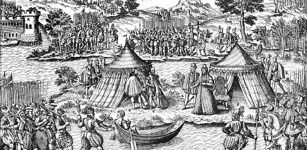 On This Day In History: Edict Of Longjumeau Was Signed And Ended Second War of Religion – On Mar 23, 1568
News | Mar 23, 2017
On This Day In History: Edict Of Longjumeau Was Signed And Ended Second War of Religion – On Mar 23, 1568
News | Mar 23, 2017 -
 Mythical Submerged City Of Ys – Europe’s Own Sodom And Gomorrah
Featured Stories | Feb 1, 2023
Mythical Submerged City Of Ys – Europe’s Own Sodom And Gomorrah
Featured Stories | Feb 1, 2023 -
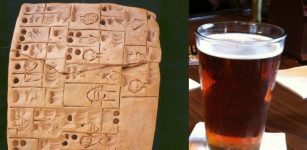 Oldest Evidence Of Beer Was Found On A Sumerian Tablet In Mesopotamia
Ancient History Facts | Jan 23, 2016
Oldest Evidence Of Beer Was Found On A Sumerian Tablet In Mesopotamia
Ancient History Facts | Jan 23, 2016 -
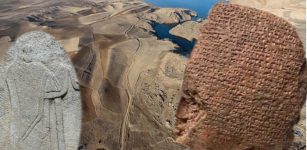 3,300-Year-Old Hittite Cuneiform Tablet Found In Büklükale Deciphered!
Archaeology | Apr 2, 2024
3,300-Year-Old Hittite Cuneiform Tablet Found In Büklükale Deciphered!
Archaeology | Apr 2, 2024 -
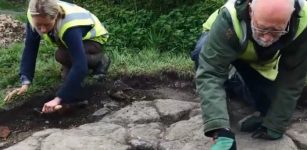 Uncovering 16th Century Scottish Royal Dockyards Used By King James IV’s Navy
Archaeology | May 24, 2018
Uncovering 16th Century Scottish Royal Dockyards Used By King James IV’s Navy
Archaeology | May 24, 2018 -
 Palatine Light Legend Is Based On A True And Tragic Event – What Really Happened On Block Island
Featured Stories | Dec 4, 2020
Palatine Light Legend Is Based On A True And Tragic Event – What Really Happened On Block Island
Featured Stories | Dec 4, 2020 -
 Secrets Of A Lake That Could Re-Write Ancient History Of America – Ancient Visitors From Distant Countries – Part 3
Civilizations | Jun 6, 2018
Secrets Of A Lake That Could Re-Write Ancient History Of America – Ancient Visitors From Distant Countries – Part 3
Civilizations | Jun 6, 2018 -
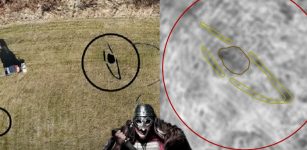 New Huge Viking Ship Discovered By Radar In Øye, Norway – What Is Hidden Beneath The Ground?
Archaeology | Apr 9, 2022
New Huge Viking Ship Discovered By Radar In Øye, Norway – What Is Hidden Beneath The Ground?
Archaeology | Apr 9, 2022 -
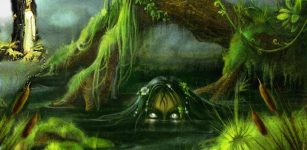 Evil Spirits And Demons Of Marshes And Swamps In Slavic Folklore
Featured Stories | Nov 16, 2016
Evil Spirits And Demons Of Marshes And Swamps In Slavic Folklore
Featured Stories | Nov 16, 2016 -
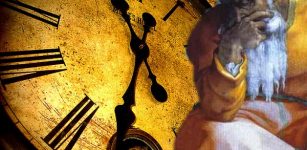 Did Ancient Civilizations Possess Knowledge Of Time Travel?
Ancient Technology | Sep 17, 2018
Did Ancient Civilizations Possess Knowledge Of Time Travel?
Ancient Technology | Sep 17, 2018 -
 Djémila – Lost City Of The Ancient Kingdom Of Numidia
Featured Stories | Jun 28, 2021
Djémila – Lost City Of The Ancient Kingdom Of Numidia
Featured Stories | Jun 28, 2021 -
 Gashadokuro: A Terrifying Nocturnal Ghost Yokai With Voracious Appetite For Human Blood
Featured Stories | Jul 16, 2023
Gashadokuro: A Terrifying Nocturnal Ghost Yokai With Voracious Appetite For Human Blood
Featured Stories | Jul 16, 2023 -
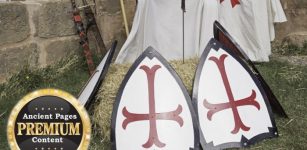 Strange Engraving Made By Knights Templar In French Village – It Doesn’t Make Sense Or Does It? – Part 2
Featured Stories | Oct 9, 2019
Strange Engraving Made By Knights Templar In French Village – It Doesn’t Make Sense Or Does It? – Part 2
Featured Stories | Oct 9, 2019 -
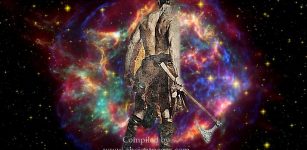 Did An Ancient Supernova Force Humans To Walk Upright?
Human Beginnings | Oct 24, 2019
Did An Ancient Supernova Force Humans To Walk Upright?
Human Beginnings | Oct 24, 2019 -
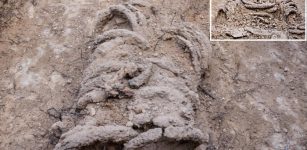 Skeletal Remains Of A 1,500-Year-Old Byzantine Ascetic Monk, Chained In Iron Rings – Uncovered Near Jerusalem
Archaeology | Jan 4, 2023
Skeletal Remains Of A 1,500-Year-Old Byzantine Ascetic Monk, Chained In Iron Rings – Uncovered Near Jerusalem
Archaeology | Jan 4, 2023 -
 Etowah Indian Mounds: A Legacy Of The Ancient Mississippian Culture
Featured Stories | Oct 9, 2018
Etowah Indian Mounds: A Legacy Of The Ancient Mississippian Culture
Featured Stories | Oct 9, 2018 -
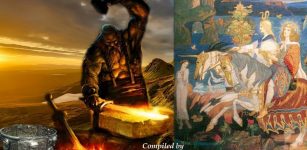 Goibniu: The Sword Smith Of Tuatha De Danann Who Forged Weapons For Battles In Celtic Mythology
Celtic Mythology | Jan 31, 2020
Goibniu: The Sword Smith Of Tuatha De Danann Who Forged Weapons For Battles In Celtic Mythology
Celtic Mythology | Jan 31, 2020 -
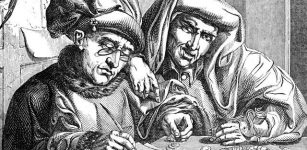 What Was Humor Like In The 13th Century?
Featured Stories | Jun 22, 2018
What Was Humor Like In The 13th Century?
Featured Stories | Jun 22, 2018 -
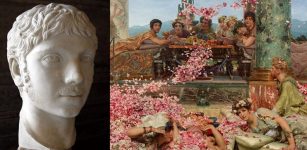 Controversial Roman Emperor Heliogabalus Wanted To Be A Woman And Much More
Featured Stories | Jun 14, 2020
Controversial Roman Emperor Heliogabalus Wanted To Be A Woman And Much More
Featured Stories | Jun 14, 2020


